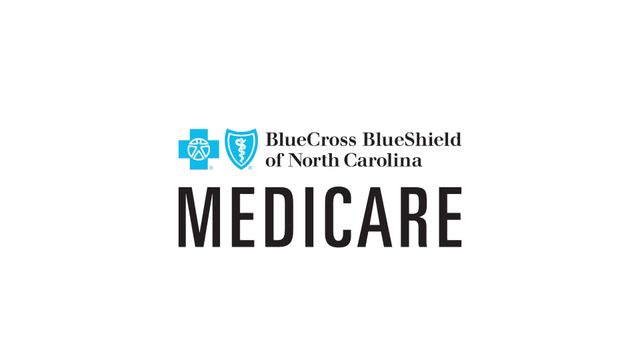The Newest Directions in Alzheimer's Research: A Conversation with Dr. Carol Colton

This article is sponsored by Blue Cross Blue Shield of North Carolina.
Now the sixth-leading cause of death in the United States (fifth in North Carolina) and the most expensive disease (it costs roughly $341,000 for the health needs of someone from diagnosis to death), what do we know?
First described by Dr. Alois Alzheimer in 1906 and anticipated to reach epidemic proportions globally by 2050, where do we stand 110 years later in terms of knowledge, treatment and prevention? And why, when we’ve made so much progress in other arenas, like cancer and heart disease, have we gained so little ground in this one?
Dr. Carol Colton, a leader of cutting edge research in the Neurology Department of Duke University Medical Center, helps answer these questions. (Below is a condensed version of our conversation.)
What is Alzheimer’s Disease (AD)?
Alzheimer’s Disease (AD) is a disease of the brain. Brain cells (neurons) die leading to changes in memory and our ability to learn. It affects many aspects of our lives over many years. It is also very difficult to study and to treat. The brain is encased in a protective covering and is somewhat isolated from the rest of the body, thus it is difficult to access brain cells -you can’t study the changes with disease easily and, of course, you don’t want to fiddle with it very much because it controls the rest of your body. Alzheimer’s is also a long, slow disease, making it hard to know when it starts.
How have we studied it to date?
Much of what we’ve learned about AD has been achieved through looking at autopsied brain sections. When researchers started examining the brains of people who had died at the same age, one with AD and one without, they could easily see differences. The principle feature was a sticky looking substance that created clumps in the brain, (now called amyloid plaques) and tangled bundles of fibers (now called neurofibrillary, or tau, tangles).
The question was were these amyloid plaques the cause of the disease process? In the last 20 years, drug companies have developed therapies using antibodies to remove amyloid from the brain. Unfortunately, this didn’t stop the disease. The failed tests told us that the amyloid is there, but it’s probably a result of the disease process, not a cause of it.
What does your research involve?
One of the major things I’ve been working on for years is the idea of the immune system being involved in AD. The immune system helps protect us from a lot of bad things. When your body senses a disruption (for example, a cut), it pours in macrophages to kill the bacteria. However, there is collateral damage to the surrounding tissue. If there were a similar immune response in your brain, you would die very quickly. In the AD brain, the immune cells—called microglia—play a different role. In AD, it’s a very slow disease process, in part because the response of the microglia the brain’s macrophage, is slow and controlled shifting the brain’s metabolism to preserve brain function as long as possible . However over time damage is done to the brain, changing how the brain works.
What have you found?
Our research is showing that the immune process in the brain does control or change how the metabolism of the brain works and that this changes in AD (and Parkinson’s disease).
There are lot of people interested in this concept and there are a lot of ways to study this. We are looking at what metabolic pathways shift in AD. We find, for example, that critical nutrients such as specific amino acids are diverted from neurons during the AD disease process. This slowly damages the neurons, changing their ability to work properly. It’s exciting new work. We still haven’t tracked out all the pathways of this process. AND we have to be cautious and patient. Unlike the idea of simply removing amyloid the brain, (which was easy and quick but did not work to stop the disease), understanding how the immune system in the brain controls the disease process is not easy and quick but makes more sense for a slow long disease process like AD.
To do this work, we’ve been developing and studying mouse models because we need a mouse model that better represents human disease. Part of the problem with the earlier hypothesis is that the immune response in a mouse was very different from that in a human. We were the first to really develop a mouse model that replicated the human immune response and that’s been a breakthrough in the field.
So far we’ve been partially successful -- by partially successful, I mean we’ve been able to see some of the AD – like problems in these mice reversed. We can see neuronal loss diminish in the mice by changing the immune regulation.
An interesting aside
Everybody knows if you’ve got a mom or dad with Alzheimer’s disease, as I did, that they have sleep disruptions and changes in their circadian (daily) rhythms that are not normal. Kristine McConnell, a wonderful undergraduate at Duke, did her senior thesis on hibernating ground squirrels. The University of Colorado sent us the brains of these hibernating animals at different stages of hibernation. We analyzed the brains, looking at metabolites, proteins, and pathways. Interestingly, the changes in the brains of the ground squirrel during hibernation sort of match what is happening in the brains of patients with AD. We found some specific proteins that you see in hibernation in squirrels that are being overexpressed in humans. This tells us that this disease process is much more sophisticated than we ever thought.
Is this really an evolutionarily significant immune response in the brain that is used in many different species to adapt to long term changes, but for some reason in humans is turned on when it should not be turned on?? This is where the field is turning. What are the initiators for this? I think what we learn in the next ten years will be really interesting.
How might this translate to the doctor’s office?
People don’t typically get diagnosed until around ten years after the disease process has started. We know that by the time the amyloid process is in full bloom that it is likely too late to intervene. We need to identify the disease much earlier. My mother died of AD. I hated it, every minute of it. AND All I can tell you is that I am working really hard to find useful pieces of this puzzle to put into place – letting us get a better picture of AD.
How can people prevent Alzheimer’s?
There’s a lot of evidence coming out about exercise. Exercise does change metabolism. There are multiple ways to exercise. Any and all of them are fine. Diet is also now believed to affect your metabolism and if it turns out that this is critical, then having a reasonable diet is important. The diets they recommend—and I don’t study them, but I think we will--include the Mediterranean diet and the DASH diet. They’re not the end-all be-all. Keep your brain active. Don’t sit in the chair watching tv all day. Read, get up, have conversations, do games and puzzles. Don’t hibernate. That’s what the ground squirrels tell us. Stay alive, move, do! Is there one magic bullet? If there is, I don’t know it yet. Eventually we’re going to figure this out and I think we’re closer now than we’ve ever been.
Is there anything that we can do to help?
Consider enrolling in a clinical trial. This is really important for us because it’s very hard to recruit a diverse population for a clinical trial. To hear about upcoming trials, register with the North Carolina Brain Registry. (I just did and it only took one minute to complete and submit the short form.)
This article is sponsored by Blue Cross Blue Shield of North Carolina.











